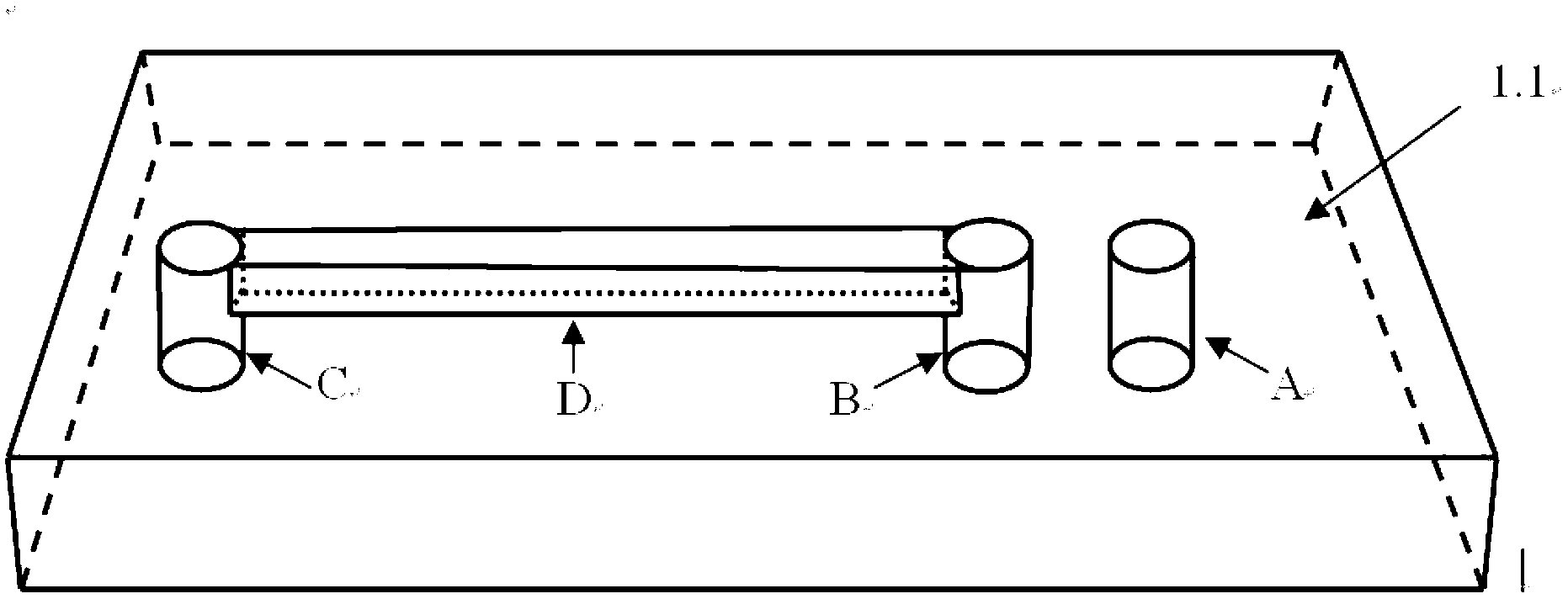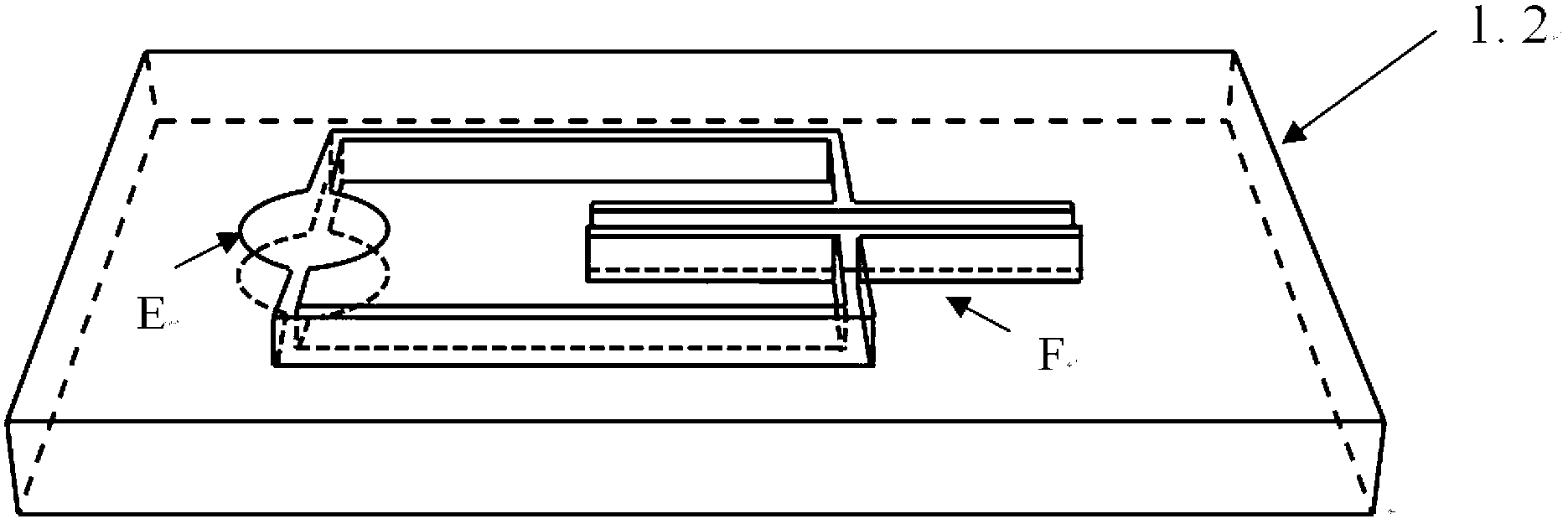Micro-fluid control device capable of simultaneously exerting mechanical stimulation and chemical stimulation
A technology of microfluidic chips and microfluidic channels, which can be used in tissue cell/virus culture devices, biochemical equipment and methods, biochemical instruments, etc., and can solve problems that do not involve chemical stimuli
- Summary
- Abstract
- Description
- Claims
- Application Information
AI Technical Summary
Problems solved by technology
Method used
Image
Examples
Embodiment 1
[0043] Preparation of microfluidic chip
[0044] The polymethyl methacrylate template was prepared by mechanical processing. After the surface was treated with perfluorosilane, the polydimethylsiloxane template was prepared by soft etching technology and the polydimethylsiloxane module was prepared by the second mold, including Microfluidic Channel Module ( figure 1 ) and the negative pressure generating module ( figure 2 ). Among them, the pipe D of the microfluidic channel module is 20mm long, 1mm wide, and 0.4mm high; three cylindrical holes A, B, and C run through the entire module, about 2mm high, and 0.8mm in diameter. The total length of the microfluidic channel module is about 30mm, and the width is about 15mm. The total length of the negative pressure generating module is about 30mm, the width is about 15mm, and the thickness is about 2mm. The groove on the negative pressure generating module is 1mm deep. Other specific data such as image 3 shown. The distanc...
Embodiment approach
[0048] The embodiment of utilizing the model of the present invention to reproduce the normal microenvironment of vascular endothelial cells in vivo is as follows:
[0049] 1. Fabricate a microfluidic chip according to the method in Example 1.
[0050] 2. Inoculate vascular endothelial cells into the microfluidic channel through fluid outlet B and inlet C on the microfluidic channel module, and culture them for 12 hours after they attach to the wall.
[0051] 3. Use a PE hose with an outer diameter of 0.8mm to connect the fluid inlet and outlet B and C to form a loop. The loop is filled with medium, and the loop is connected to a peristaltic pump. The flow rate of the circulating liquid flow is controlled by the peristaltic pump. The fluid shear stress suffered by the cells is controlled between 1.16Pa and 5.07Pa (the range of normal fluid shear stress suffered by cells in vivo).
[0052] 4. Use a PE hose with an outer diameter of 0.8mm to connect the through hole A with the ...
Embodiment 3
[0056] Using the model of the present invention to reproduce the microenvironment of vascular endothelial cells in vivo, changing the chemical stimulation conditions in the culture medium alone, and providing a hyperglycemic environment for vascular endothelial cells, one of the embodiments is as follows:
[0057] 1. Fabricate a microfluidic chip according to the method in Example 1.
[0058] 2. Inoculate vascular endothelial cells into the microfluidic channel through fluid outlet B and inlet C on the microfluidic channel module, and culture them for 12 hours after they attach to the wall.
[0059] 3. Use a PE hose with an outer diameter of 0.8mm to connect the fluid inlets B and C to form a loop, add 20mmol / L glucose to the culture medium and fill the loop, and connect the loop to a peristaltic pump, which is controlled by the peristaltic pump The flow rate of the circulating liquid flow controls the fluid shear force suffered by the cells within 1.16Pa to 5.07Pa (the range ...
PUM
 Login to View More
Login to View More Abstract
Description
Claims
Application Information
 Login to View More
Login to View More - R&D
- Intellectual Property
- Life Sciences
- Materials
- Tech Scout
- Unparalleled Data Quality
- Higher Quality Content
- 60% Fewer Hallucinations
Browse by: Latest US Patents, China's latest patents, Technical Efficacy Thesaurus, Application Domain, Technology Topic, Popular Technical Reports.
© 2025 PatSnap. All rights reserved.Legal|Privacy policy|Modern Slavery Act Transparency Statement|Sitemap|About US| Contact US: help@patsnap.com



